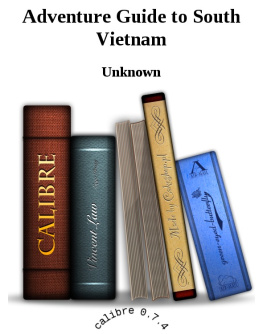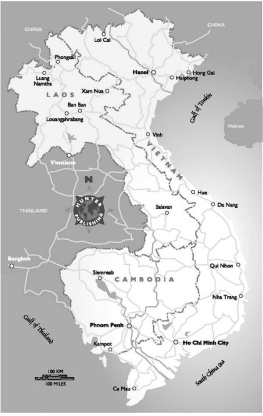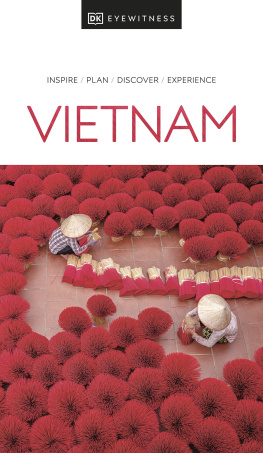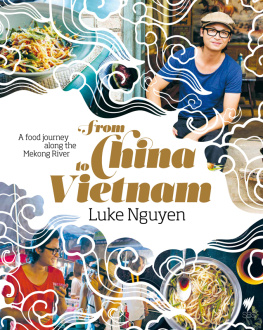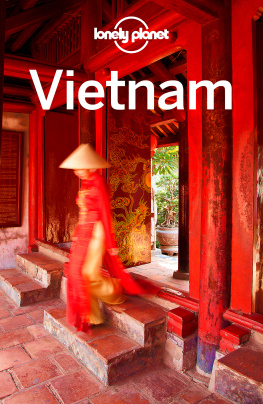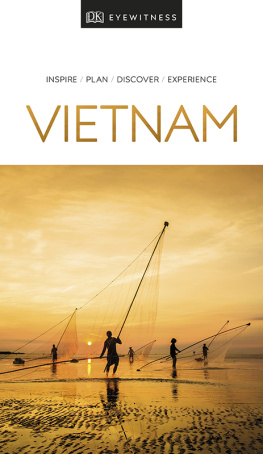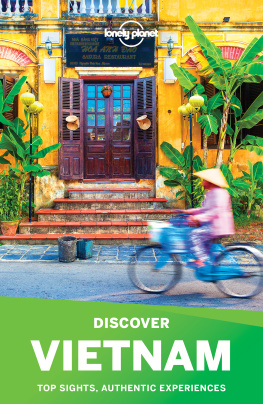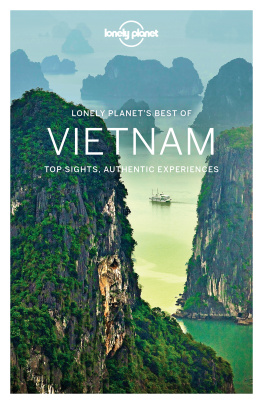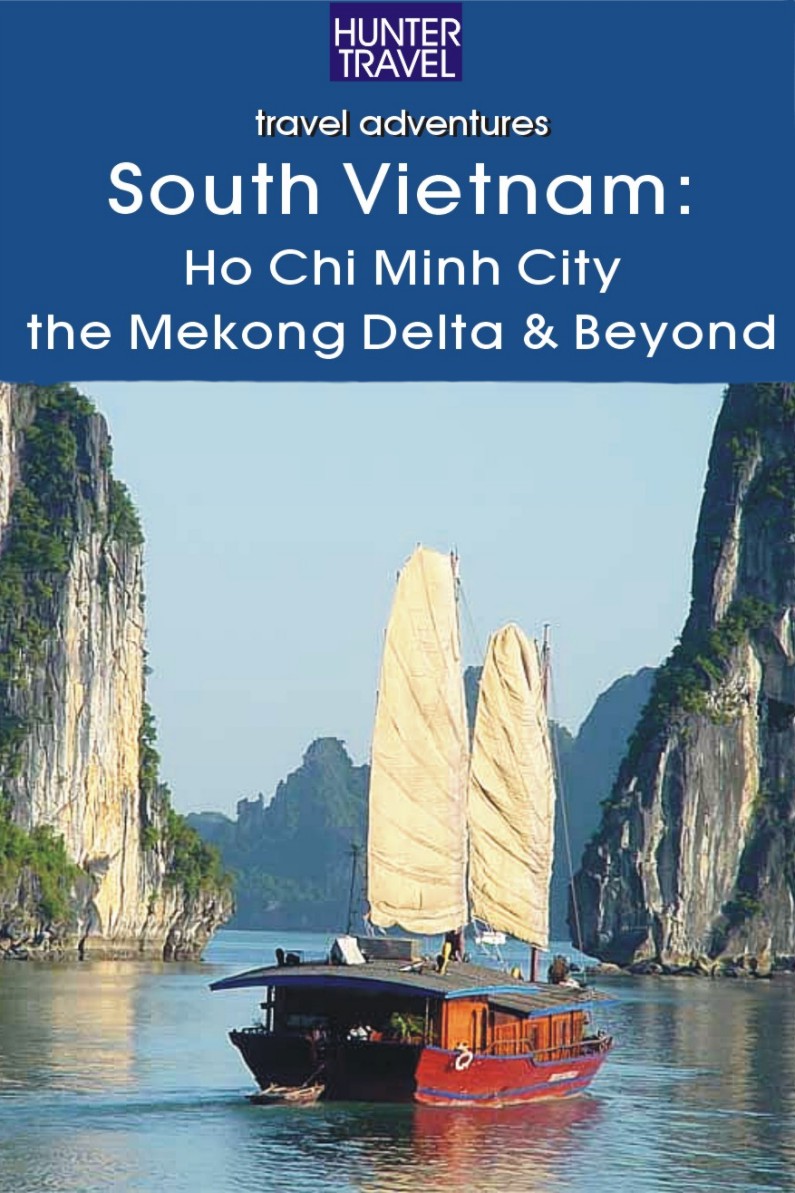
Adventure Guide to South Vietnam: Ho Chi Minh City, the Mekong River Delta & Beyond
Janet Arrowood
HUNTER PUBLISHING, INC,
www.hunterpublishing.com
Hunter Publishing, Inc.
All rights reserved. No part of this publication may be reproduced, stored in a retrieval system, or transmitted in any form, or by any means, electronic, mechanical, photocopying, recording, or otherwise, without the written permission of the publisher.
This guide focuses on recreational activities. As all such activities contain elements of risk, the publisher, author, affiliated individuals and companies disclaim responsibility for any injury, harm, or illness that may occur to anyone through, or by use of, the information in this book. Every effort was made to insure the accuracy of information in this book, but the publisher and author do not assume, and hereby disclaim, liability for any loss or damage caused by errors, omissions, misleading information or potential travel problems caused by this guide, even if such errors or omissions result from negligence, accident or any other cause.

Introduction
Why visit this part of the world? It is relatively safe, untrammeled by tourists, and still gives a taste of the "old" Southeast Asia and French Colonial empire. There are tremendous waterfalls, impressive rivers, huge lakes, wildlife, elephant rides, jungles, wonderful people, and fabulous food. The costs are a fraction of those "at home" and the experience will last a lifetime. Once you've been, the region will call you back again and again. Adventure awaits.
Note: The earthquake and accompanying tsunami of December 2004 did not directly affect any of the countries covered in this book. At the same time, the difficulty getting relief supplies to the affected countries shows how poor the infrastructure in this part of the world can be. Many of the tips in this book are intended both to make your trip easier.
Responsible Travel
As more people visit this beautiful and largely unspoiled region it is very important to be a responsible, environmentally aware traveler. True eco-tourism hasn't arrived here yet. Adventure and active travel are beginning to catch on, and even to boom in Vietnam and parts of Laos, but the infrastructure and services are lagging behind the expectations of many travelers. Remember, the people who live have to stay when we leave, and they live with the attitudes, damage, and goodwill we bring and leave behind. Please recycle your water bottles, pick up your trash, save water and electricity. Resources are scarce, precious, and expensive.
The Recent Past
For much of the past 150 years the region encompassing Laos, Vietnam, and Cambodia was referred to as French Indochina/Cochinchina. Indeed, the French occupation, stretching from about 1850 to the early 1950s, has left a mark on these three countries that adds to their cultural, historical, architectural, and gastronomic appeal. At the same time, they have been severely impacted by internal and external wars, the imposition of communism/socialism, and the absence, for many decades, of any sort of tourism.
It is only in the past 10-15 years that tourists have returned to discover the unique attractions and almost pristine beauty of the region. In fact, it has been mostly during the past five years that significant tourist infrastructure has been developed, with tourists returning in substantial numbers. For the first time in 30 years you can now fly directly into the region (Hanoi and Ho Chi Minh City) on an American-flagged airline - United Airlines - as well as on many Asian and European carriers (Air France, Lufthansa, Singapore, Thai, among others).
Eco-tourism in the area is in its infancy, and cultural, adventure, and active travel only at the toddler stage. Still, changes are happening at a near-lightning pace, so you are in for a real treat. The people are warm and welcoming; the temples are spectacular; the museums are fascinating; the opportunities to explore and experience unique cultures are almost limitless; and the variety of action-packed and light adventure opportunities is boundless.
The area has been repeatedly invaded, influenced, or controlled by peoples from China, Thailand, France, the United States, Burma, India, and many other countries. Their influences can be readily seen in the art, language, customs, culture, and landscape of each country.
In recent years, communism/socialism (and a degree of isolationism) have been the prevailing cultural influence in Laos and Vietnam, but the hard-core versions that were initially imported are being softened to allow for free enterprise, foreign investment, and the blossoming of small businesses. In Cambodia there are still lingering effects of the Pol Pot regime, but things are changing and improving.
Although there are many superficial similarities between the three countries, each is really quite different. Within countries, different areas feel different, too.
The northern part of Vietnam has the longest history of communism/socialism, and it shows in subtle and not-so-subtle ways. The government's reach is long, but 30 fewer years of communist rule makes for a noticeable difference between the North and the South.
In Cambodia, the smaller towns feel more welcoming and less restrictive than does Phnom Penh, but the energy level in Phnom Penh is so much higher.
In Laos, the biggest distinction is between the city and village dwellers. As Vientiane grows, and the non-Governmental Organizations (NGOs) extend their influence, the laid-back atmosphere will continue to fade. For example, Vientiane (Laos) used to be a small backwater serving as a national capital, but the ASEAN (Association of Southeast Asian Nations) summit in November 2004 has started to change all that.
The Land
The more traveled parts of Cambodia are relatively flat and almost water-logged. The short stretch of coast is quite beautiful and rarely visited. Vietnam is extremely rugged across most of its land area, except right along the coast, and even that area is far from flat. The exception is the Mekong Delta where it's flat, almost boggy in places, and hot. Laos is rugged, with a few flat valleys, especially along the rivers, and there's no coastline.
Why Come Here?
There are many tried-and-true destinations such as Europe, or even the big, English-speaking countries of Asia you could visit. These places have the infrastructure to provide all the comforts of home, thousands of years of history, plenty of opportunities for active and adventure travel, and ease of access. But these same "features" can be disadvantages. Why?
Comfort, convenience and familiarity come at a very high price. In recent years the dollar has hit all-time lows against European and some Asian currencies. Most things in the developed world are expensive and predictable. You see the same types of tourists over and over.
In Southeast Asia the sense of the new and unknown is still there. The dollar is still worth something. True adventure and ancient cultures are getting harder to find. The world is being overrun with CNN, BBC, DVDs, CDs, fancy electronic devices, and other modern "conveniences." The poorest house in the most southerly reaches of Laos may have a generator and a two-meter satellite dish, while a frightening number of children die before their fifth birthday and the local hospital is not much more than a shack with a few beds, fewer staff, poor sanitation, and almost no supplies.
Next page
